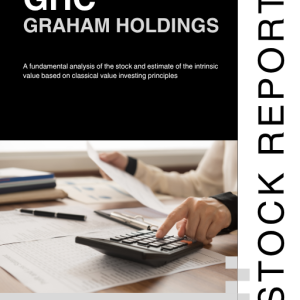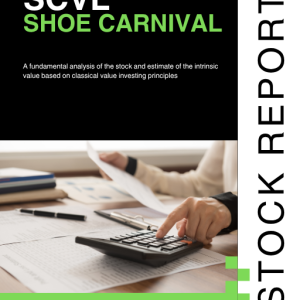
Introduction: Why Every Investor Needs an Investment Policy Statement
How do you stay disciplined when markets are unpredictable? An Investment Policy Statement (IPS) serves as your financial roadmap. It guides your investment decisions and keeps you focused on long-term goals. This document provides a framework that helps you manage the emotional and strategic challenges of investing.
An IPS offers a structured approach that keeps you committed to your financial objectives, even during uncertain times. It safeguards you against impulsive decisions and ensures you maintain clarity about your investment strategy.
By the end of this article, you will know how to create a personalized IPS and take control of your financial future.
What Is an Investment Policy Statement?
Before exploring the details, let’s clarify what an Investment Policy Statement (IPS) is and why it matters to professional and personal investors alike.
An Investment Policy Statement outlines your financial goals, risk tolerance, and investment strategies. It serves as a decision-making guide that keeps your investments aligned with your objectives and ensures consistency over time.
Both professional and individual investors use IPSs. Financial advisors rely on them to manage portfolios systematically, while institutional investors use them to maintain accountability. For individuals, an IPS provides clarity and discipline for managing personal finances.
By setting clear parameters for your financial journey, an IPS empowers you to approach investing with confidence and purpose. Now, let’s explore its key components.
Key Components of an Investment Policy Statement
To build an effective IPS, you need to include elements that address your financial situation and investment approach. Each component shapes your strategy and ensures your investments align with your goals. Let’s examine these components in detail.
Financial Goals
Financial goals form the foundation of your Investment Policy Statement. You might aim to save for retirement, fund a child’s education, or grow generational wealth. By specifying both short-term and long-term objectives, including exact amounts and timelines, you establish a clear direction for your investments and an effective way to measure your progress.
Specify both short-term and long-term goals, including amounts and timelines. Clear goals provide direction and allow you to measure progress effectively.
Risk Tolerance
Understanding your risk tolerance is crucial for designing a portfolio that suits your comfort level. Ask yourself how much volatility you can handle and how long you can stay invested during downturns. Aligning your risk tolerance with your financial goals and time horizon ensures your investments remain manageable and effective.
Align your risk tolerance with your financial goals and time horizon. By understanding your comfort level with risk, you can design a portfolio that fits your needs.
Asset Allocation Strategy
Strategic asset allocation helps balance risk and reward. You might divide your portfolio among equities, bonds, real estate, and alternative investments based on your risk tolerance and objectives. Diversifying across these asset classes ensures your portfolio can weather market fluctuations while meeting your financial goals.
Asset allocation balances risk and reward based on your risk tolerance and objectives. Strategic allocation ensures diversification and reduces the impact of market fluctuations.
Investment Selection Criteria
Your IPS should include clear criteria for selecting investments. For instance, you may focus on value stocks with low Price-to-Earnings ratios, growth stocks with strong revenue increases, or high-yield dividend stocks for steady income. These guidelines help you make objective decisions and minimize emotional biases in your investment process.
You should also define guidelines for the situations when you would exit a stock or a holding.
Diversify your investments to reduce risk. Use this section of your IPS to guide decisions and avoid impulsive choices.
Rebalancing Rules
Rebalancing ensures your portfolio remains aligned with your strategy, even as market conditions change. You might choose to rebalance when your portfolio drifts more than 5% from its target allocation or on a set schedule, such as annually or quarterly. These rules maintain consistency and help you avoid unintentional risk shifts.
Rebalancing ensures your portfolio stays aligned with your investment goals, even when market conditions shift.
Performance Monitoring and Benchmarks
Measuring your portfolio’s performance against benchmarks like the S&P 500 or Russell 2000 helps you track progress and identify areas for improvement. These benchmarks provide a clear framework to evaluate your strategy’s effectiveness and ensure you’re on the right path.
Special Considerations
Special considerations help tailor your IPS to your unique needs. You may prioritize tax-efficient strategies, align your investments with ethical values, or ensure liquidity to handle emergencies. Including these factors makes your IPS more comprehensive and aligned with your personal circumstances.
Incorporate these considerations to customize your IPS and ensure it meets your specific needs and values. Now, let’s move on to the steps for creating your IPS.
Step-by-Step Guide to Crafting Your Investment Policy Statement
With a solid understanding of IPS components, you’re ready to create a personalized statement. Follow these steps to design a document that aligns with your financial goals and guides your decisions.
Step 1: Clarify Your Financial Goals
Defining financial goals is the first step in crafting your IPS. Use the SMART framework—Specific, Measurable, Achievable, Relevant, Time-bound—to set clear objectives. For instance, you might aim to save $1 million for retirement by age 65 by consistently investing $1,000 monthly. Clear, actionable goals serve as a roadmap, helping you track progress effectively.”
Well-defined goals provide a roadmap for your investments and allow you to track progress effectively.
Step 2: Assess Your Risk Tolerance and Capacity
Evaluate your comfort with market fluctuations. Consider factors such as income stability, age, and financial obligations. Understanding your risk tolerance helps set realistic expectations for your portfolio.
Step 3: Determine Your Asset Allocation
Design a diversified portfolio that aligns with your goals and risk tolerance. For a conservative approach, consider allocating 40% to equities, 50% to bonds, and 10% to cash. If you prefer an aggressive strategy, you might allocate 80% to equities, 10% to bonds, and 10% to alternatives. The right balance ensures you optimize returns while effectively managing risk.
A balanced allocation optimizes returns while managing risk effectively.
Step 4: Define Investment Selection Criteria
Establish clear guidelines for selecting investments to avoid emotional decision-making. For instance, focus on valuation metrics like Price-to-Earnings ratios, high dividend yields, and strong revenue growth potential. These criteria help streamline your choices and ensure that each investment aligns with your overall strategy.
Clear criteria simplify decision-making and minimize emotional biases.
Step 5: Outline Rebalancing Rules
Set specific rules for rebalancing your portfolio to maintain alignment with your strategy. You might choose to rebalance annually or whenever an asset class deviates by more than 5% from its target allocation. These rules prevent unintended risk shifts and keep your portfolio optimized for long-term success.”
Rebalancing keeps your portfolio in sync with your strategy.
Step 6: Establish Monitoring and Reporting Processes
Commit to reviewing your portfolio and IPS regularly. Adjust as needed to reflect major life events or market changes. Routine monitoring ensures your investments stay aligned with your goals.
Common Mistakes to Avoid When Creating an IPS
Even with the best intentions, creating an IPS can lead to errors. Recognizing common pitfalls helps you maintain a disciplined approach.
Creating an IPS comes with potential pitfalls, but understanding them can help you avoid common mistakes. Ensure your IPS strikes the right balance—include enough detail to guide decisions without overwhelming yourself. Consider tax implications by using strategies like tax-loss harvesting to optimize returns. Avoid making frequent changes based on short-term market noise; stick to your plan unless significant shifts occur in your goals or risk profile. Lastly, ensure your targets are realistic and achievable within your timeline to keep your strategy grounded.
Avoiding these pitfalls ensures your IPS serves as a reliable tool for long-term success.
Why Your IPS Is a Living Document
Your financial goals and circumstances evolve over time, and your IPS should reflect these changes. This section emphasizes the importance of keeping your document relevant.
Your IPS is not static. It should adapt to major life events like marriage, career changes, or nearing retirement. Regular updates ensure it continues to reflect your priorities and supports your financial journey.
Annual reviews help you maintain an IPS that aligns with your evolving goals and market conditions.
Conclusion: Your Path to Financial Clarity Starts Here
An Investment Policy Statement provides clarity and discipline, helping you manage the complexities of investing. Take the time to create your IPS and build confidence in your financial decisions.
With a clear IPS, you can navigate market challenges, seize opportunities, and achieve your financial goals.
Featured products

Shailesh Kumar, MBA is the founder of Astute Investor’s Calculus, where he shares high-conviction small-cap value ideas, stock reports, and investing strategies.
His work has been featured in the New York Times and profiled on Wikipedia. He previously ran Value Stock Guide, one of the earliest value investing platforms online.
Subscribe to the Inner Circle to access premium stock reports and strategy insights.
Featured in:











